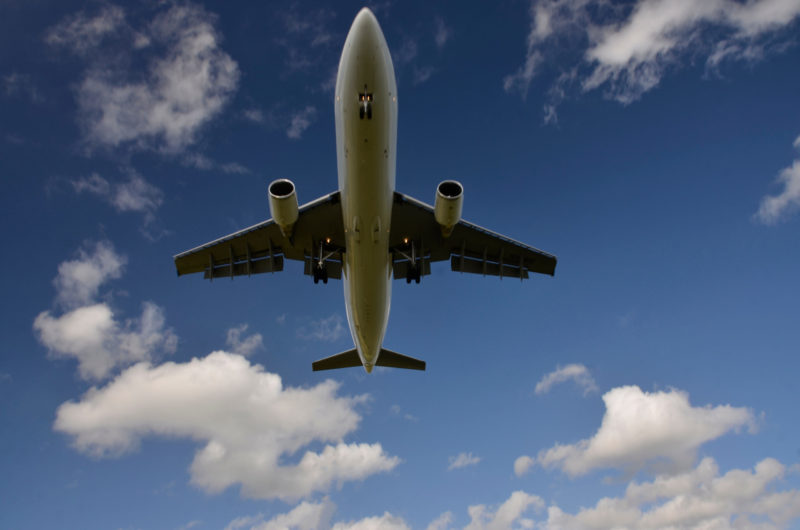US travel & leisure companies in the front line as interest rates rise

Already burdened by debt expense, US travel & leisure companies are expected to pay an additional $785mn in interest expense in 2022 as rates rise.
Treasurers are bracing themselves for a world of higher interest rates, and the greatest challenge is faced by US travel & leisure companies. Badly hit during the pandemic, this sector is precariously positioned with low ability to fulfil interest obligations while they hold 36% of their outstanding debt linked to changes in variable interest rates.
These companies are now expected to pay an additional $785 million in interest expense in 2022, a 7.5% increase from last year, EuroFinance’s analysis shows, although increased interest income on cash investments may offset some of this.
Although many have converted the variable-rate liability to a fixed-rate liability via financial instruments such as an interest rate swap, this only provides a partial protection as notional hedges reduced by a quarter or $2.5 billion in 2021. Instead, treasures are refinancing debt and extending debt maturity profile.
Growing Interest risk
Consider the cruise operators, Carnival Corporation, Royal Caribbean Group and Norwegian Cruise Line Holdings, who had to suspend many of their sailings during the pandemic and the spread of Omicron hampered their efforts to resume a fuller schedule. That had forced the companies to sustain themselves by running up larger debts, as they generated record operating losses.
!function(){“use strict”;window.addEventListener(“message”,(function(e){if(void 0!==e.data[“datawrapper-height”]){var t=document.querySelectorAll(“iframe”);for(var a in e.data[“datawrapper-height”])for(var r=0;r<t.length;r++){if(t[r].contentWindow===e.source)t[r].style.height=e.data["datawrapper-height"][a]+"px"}}}))}();
For Carnival, this meant a threefold increase in its floating rate debt to $14.8 billion, representing 42.5% of the total debt outstanding in 2021. Now, as interest rates begin to rise, EuroFinance estimates the total interest expense to increase by 12.4% or $195 million to $1.76 billion in 2022.
Meanwhile, Norwegian Cruise Lines and Royal Caribbean Cruises, which held 36% of their total debt in floating rates, borrowing cost is expected to increase by 7.4% and 5.1%, respectively to $694 million and $1.35 billion in 2022.
On the other end of the spectrum, American Airlines and United Airlines are expected to incur $1.98 billion and $1.79 billion in interest expense in 2022, 10% or 8.5% more than a year ago, respectively.
However, as air passenger travel improved in 2021, airlines were better off than cruise operators as their interest coverage, ratio of earnings before tax, depreciation and amortisation versus interest expense for the period was back in positive in 2021 albeit lower than the pre-pandemic level.
Amongst other, Nevada-based provider of gambling products and services, Scientific Games and ticket sales manager- Live Nation Entertainment are expected to spend an additional 9.7% and 5.4% on servicing outstanding debt in 2022.
!function(){“use strict”;window.addEventListener(“message”,(function(e){if(void 0!==e.data[“datawrapper-height”]){var t=document.querySelectorAll(“iframe”);for(var a in e.data[“datawrapper-height”])for(var r=0;r<t.length;r++){if(t[r].contentWindow===e.source)t[r].style.height=e.data["datawrapper-height"][a]+"px"}}}))}();
Insufficient hedges
Considering the exceptionally low interest rate environment in recent years, treasurers had significantly reduced interest rate hedging, i.e. converting the variable-rate debt to a fixed-rate debt. But now that rates have begun to rise, unhedged positions have become riskier, even more for travel & leisure firms which are holding a high degree of floating rate debt while not earning enough as they operate at lower than pre-pandemic occupancy levels.
Norwegian Cruise Line held interest rate swaps for a notional value of only $200 million at the start of 2022, which when divided by the total variable debt stood at 5.65%, significantly lower than 22.16% a year ago.
Under these swap agreements; companies are able to exchange their floating-rate interest payments with fixed-rate interest payments, thereby reducing exposure to fluctuations in interest rates.
Caesars entertainment, Royal Caribbean Cruises and Carnival Corporation also followed suit as notional hedges reduced by $1.05 billion, $387 million and $90 million in 2021 to $1.25 billion, $2.29 billion and $147 million, respectively.
On the other hand, both American and United Airlines abstain from using interest rate derivatives to hedge against rising interest rates.
American Airlines defends its no hedging stance by employing a natural hedge as it expects higher interest income earned on its short term investments to cover the rising interest expenses.
“Any corresponding increase in interest rates would also increase American’s asset base. And, given American’s substantial liquidity position, interest income would benefit, thus providing a natural hedge against rising rates” a spokesperson at American Airlines told EuroFinance
The company had invested $12.15 billion in money market funds, corporate bonds and time deposits in 2021, as compared to $6.6 billion in 2020.
!function(){“use strict”;window.addEventListener(“message”,(function(e){if(void 0!==e.data[“datawrapper-height”]){var t=document.querySelectorAll(“iframe”);for(var a in e.data[“datawrapper-height”])for(var r=0;r<t.length;r++){if(t[r].contentWindow===e.source)t[r].style.height=e.data["datawrapper-height"][a]+"px"}}}))}();
Focus on refinancing
Instead of hedging, companies are extensively looking to tap debt markets to refinance existing maturities and move towards longer tenors.
For instance, Carnival Corporation refinanced more than $9 billion of debt in 2021 and is also planning to further refinance outstanding notes in the coming quarters. With these transactions, treasurers have been able to alleviate debt maturity pressures as only 4.4% of outstanding debt is set to mature in the coming year as compared to 24.7% in 2019.
”Our finance team has been refinancing debt with more favourable terms in the past year”, a spokesperson at Carnival told EuroFinance.
Treasurers at Royal Caribbean cruises also followed suit as they refinanced $2.3 billion of guaranteed high-coupon debt during the year and plans to continue these transactions going forward.
Meanwhile, Norwegian Cruise line raised $2.1 billion through a series of debt transactions in February, which will be used to redeem outstanding balances for senior notes while making scheduled interest and principal repayments in the coming quarters.
“This transaction extended our debt maturity profile and released certain collateral” said Mark Kempa, CFO at Norwegian Cruise Line
However, treasurers need to act swiftly. Russia’s invasion of Ukraine has added to earnings pressure resulting from commodity prices, while hawkish commentary from the Federal Reserve implies a limited time window before the opportunity to lock in lower refinancing costs disappears.
!function(){“use strict”;window.addEventListener(“message”,(function(e){if(void 0!==e.data[“datawrapper-height”]){var t=document.querySelectorAll(“iframe”);for(var a in e.data[“datawrapper-height”])for(var r=0;r<t.length;r++){if(t[r].contentWindow===e.source)t[r].style.height=e.data["datawrapper-height"][a]+"px"}}}))}();